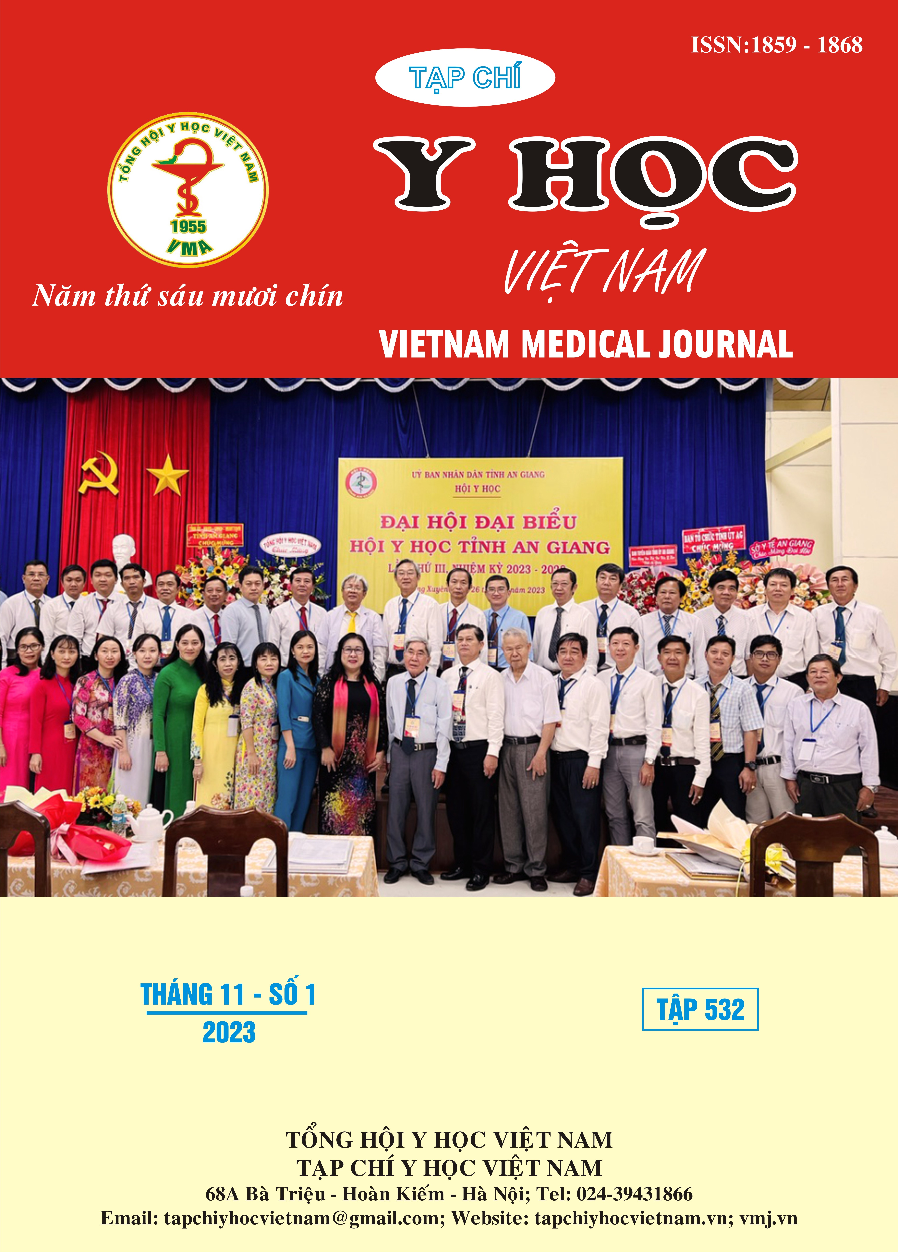A COMMUNITY PERCEPTION SURVEY OF HEMORRHOIDAL DISEASE, CHOICE OF TREATMENT AND AND SOME RELATED FACTORS
Main Article Content
Abstract
Background: In the world, there have been many studies on hemorrhoids and its treatment methods. In Vietnam, there’s been few studies on awareness of hemorrhoids and treatment trends in the community. Objectives: This survey was conducted to evaluate the community perception of hemorrhoidal diseases and choice of treatment modalities. Subjects and methods: This was a cross-sectional descriptive study on 1142 adults over 25 years old who answered the online questionnaire from March 2022 to April 2022 across the country. Results: Percentage of people with awareness of hemorrhoids: 81% (925/1142). Average age: 34.9 ± 8.5, male: 49.5%. Prevalence of hemorrhoids: 34.7% (321/925). The most effective and safe treatment method was eating habits and lifestyle changes 25.8% (239/925), using oral and topical drugs was the most preferred 31.2%. 49.4% were concerned with surgery because of side effects (457/925) as well as for procedures 42.7% (395/925). Using supplements or folk remedies, herbs can increase the risk of recurrence more than 3 times with OR value 1.8 (p = 0.023), the risk of severe disease progression with OR value of 1.8 (p = 0.01). Conclusion: Assessing public perception of hemorrhoids and treatment help plan to limit factors that increase the severity of the disease
Article Details
Keywords
hemorrhoidal diseases, treatment, awareness, community perception
References
2. Riss S, Weiser FA, et al (2012). The prevalence of hemorrhoids in adults. Int. J. Colorectal Dis. 27(2), 215–220.
3. Lee, J.H., Kim, H.E., et al. (2014). Factors Associated with Hemorrhoids in Korean Adults: Korean National Health and Nutrition Examination Survey. Korean Journal of Family Medicine, 35(5), 227-236.
4. Nguyễn Mạnh Nhâm (2004). Nghiên cứu bệnh trĩ ở các tỉnh phía Bắc Việt Nam và các biện pháp phòng bệnh-điều trị. Tạp chí Hậu môn Trực tràng, IV, tr. 3-15.
5. Shi Y, Yang D, Chen S, et al (2019). Factors influencing patient delay in individuals with haemorrhoids: A study based on theory of planned behavior and common sense model. J Adv Nurs. 75(5):1018-1028.
6. Prasad GC, Prakash V, et al. (1976). Studies on etiopathogenesis of hemorrhoids. Am J Proctol;27:33-41.
7. Sheikh P, Régnier C, et al (2020). The prevalence, characteristics and treatment of hemorrhoidal disease: results of an international web-based survey. J Comp Eff Res;9(17):1219-1232.
8. Lohsiriwat V, Sheikh P, et al (2023). Recurrence Rates and Pharmacological Treatment for Hemorrhoidal Disease: A Systematic Review. Adv Ther.40(1):117-132.


